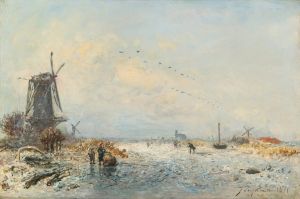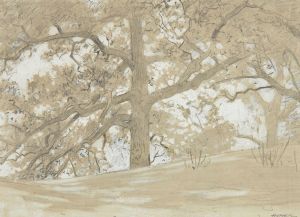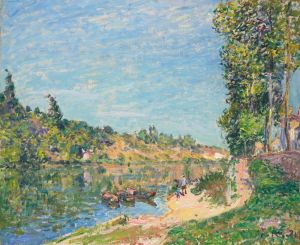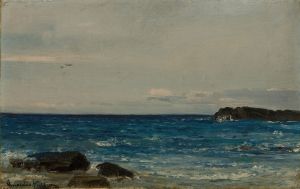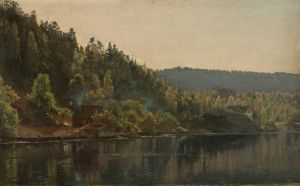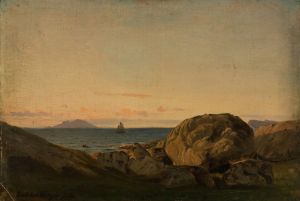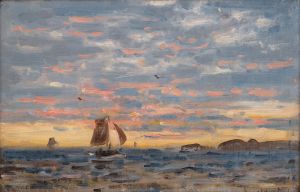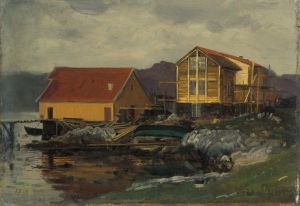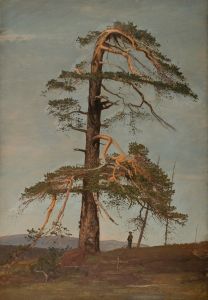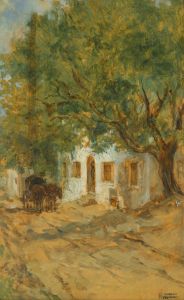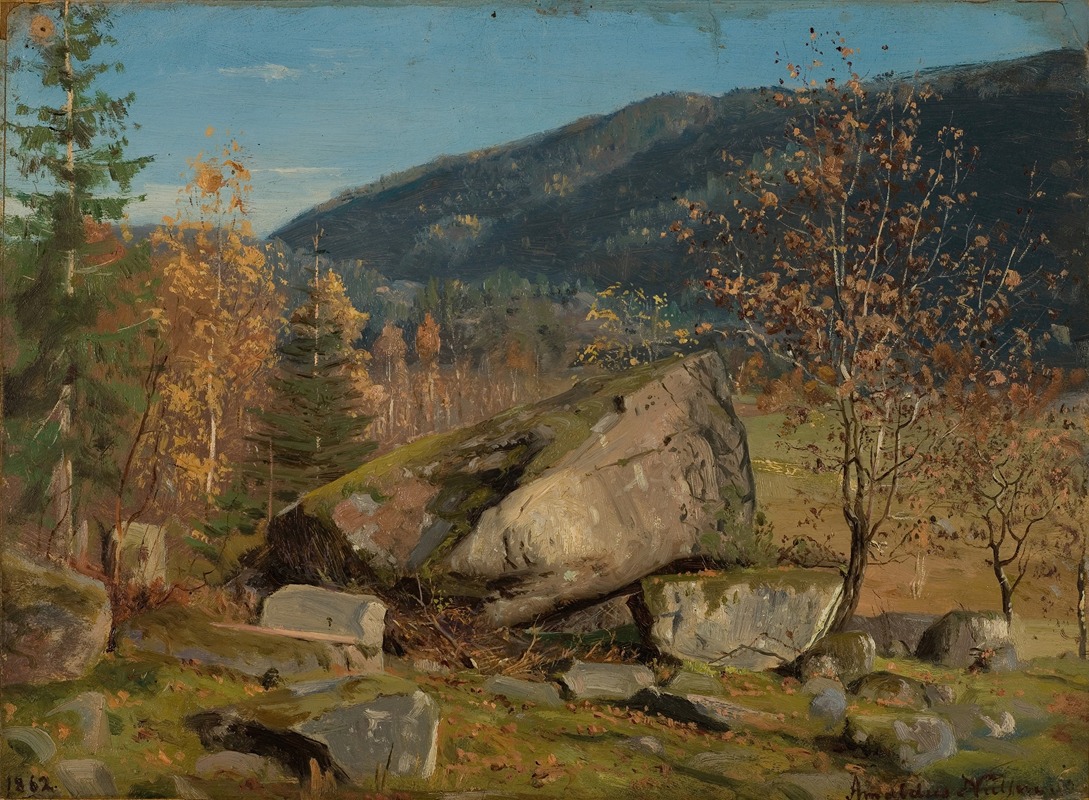
Høstdag. Bjelland, Mandal
A hand-painted replica of Amaldus Nielsen’s masterpiece Høstdag. Bjelland, Mandal, meticulously crafted by professional artists to capture the true essence of the original. Each piece is created with museum-quality canvas and rare mineral pigments, carefully painted by experienced artists with delicate brushstrokes and rich, layered colors to perfectly recreate the texture of the original artwork. Unlike machine-printed reproductions, this hand-painted version brings the painting to life, infused with the artist’s emotions and skill in every stroke. Whether for personal collection or home decoration, it instantly elevates the artistic atmosphere of any space.
Amaldus Nielsen was a prominent Norwegian painter known for his contributions to landscape painting in the 19th century. One of his notable works is "Høstdag. Bjelland, Mandal," which translates to "Autumn Day. Bjelland, Mandal." This painting is a fine example of Nielsen's ability to capture the serene beauty of the Norwegian landscape, particularly during the autumn season.
Amaldus Clarin Nielsen was born on May 23, 1838, in Mandal, Norway. He is often celebrated as one of the pioneers of naturalism in Norwegian art. Nielsen's artistic journey began in his hometown, but he later moved to Düsseldorf, Germany, to study at the Düsseldorf Academy, which was a significant center for art education during the 19th century. His time in Düsseldorf greatly influenced his style, as he was exposed to the principles of naturalism and realism that were prevalent in the art community there.
"Høstdag. Bjelland, Mandal" is a testament to Nielsen's dedication to depicting the Norwegian landscape with accuracy and sensitivity. The painting portrays a scene from Bjelland, a village in the Mandal region, during the autumn. Nielsen's choice of subject matter reflects his deep connection to his homeland and his desire to capture its unique atmosphere and natural beauty.
The painting is characterized by its detailed representation of the landscape, with particular attention given to the play of light and shadow. Nielsen's use of color is subtle yet effective, capturing the muted tones of autumn foliage and the soft light of an overcast day. The composition is balanced, drawing the viewer's eye through the landscape and inviting them to explore the scene.
Nielsen's work is often associated with the transition from romanticism to naturalism in Norwegian art. While romanticism emphasized dramatic and idealized depictions of nature, naturalism focused on realistic and detailed portrayals. Nielsen's paintings, including "Høstdag. Bjelland, Mandal," exemplify this shift, as they present the Norwegian landscape in a truthful and unembellished manner.
Throughout his career, Nielsen remained committed to painting en plein air, or outdoors, which allowed him to observe and capture the changing conditions of the natural environment firsthand. This approach is evident in "Høstdag. Bjelland, Mandal," as the painting conveys a sense of immediacy and authenticity.
Amaldus Nielsen's contributions to Norwegian art were significant, and his works continue to be appreciated for their technical skill and emotional depth. "Høstdag. Bjelland, Mandal" is a fine example of his ability to convey the quiet beauty of the Norwegian landscape, and it remains an important piece within his oeuvre.
Nielsen passed away on December 10, 1932, but his legacy lives on through his paintings, which are held in various collections, including the National Museum of Art, Architecture and Design in Oslo. His work continues to inspire and influence artists and art enthusiasts who appreciate the natural beauty of Norway and the skillful artistry of Amaldus Nielsen.





